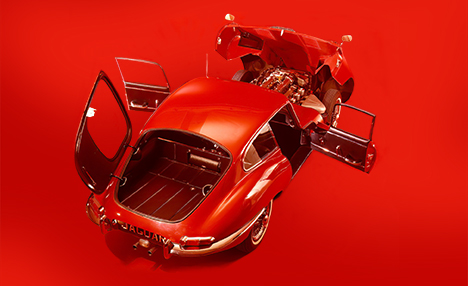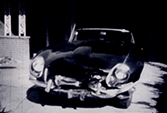Design work on the twin-cam MG was inaugurated in March of 1953, but the public announcement did not take place until July of 1958—a lapse of a little over five years. Although this is an extraordinarily long interval (two years is normal practice, except for Ferrari, where they do this kind of thing in three months!), the time has been well spent, and the new unit should be free of the usual bugs which seem unavoidable in an entirely new product.
In the fall of 1955 our technical editor inspected two experimental engines at the MG factory, but it wasn’t until July of this year that we were able to drive one. The first few samples were rushed over, and they just weren’t quite right as delivered. We accordingly delayed our full-scale road test until this issue in order to give a fair and accurate test report. This was fortunate, for it also allowed us to test two cars, one of which had certain options and was fully set up for serious competition.
THE DESIGN . . .
The twin-cam MG would never have appeared if it weren’t for the enthusiasm and know-how of two men at Abingdon, John Thornley. the general manager, and Sydney Enever on the technical side. Together, they convinced their chief, K. B. Lord, of the need for such a model. Approval was granted, but with one stipulation: the cylinder block must be machinable on the “B” series production line. In truth the block is all-new. but it will go “down the line.” However, it must be finish-machined on a special line because the bore size is larger and the main bearings narrower than in the standard 1188-cubic centimeter unit. Incidentally, peak “production” will be about 25 per week, or no more than 750 per year.
To take full advantage of the 1600-cc category it was necessary to enlarge the bore from 2% to 2 31/32 inches (BMC still uses fractions). This change requires special pattern equipment, and the bores between cylinders 1 and 2 and between 3 and 4 are siamesed. With very adequate breathing, the peak revolutions could exceed 7000 revolutions per minute, and a revised crankshaft is used. It retains the 2-in. mains and 1.875-in. crankpins, but narrower main bearings are used to allow room for thicker crank cheeks. Unit bearing pressures are higher, of course, and this is provided for by specifying heavy-duty copper/lead bearing inserts with steel backings. The connecting rods are different, with full-floating wrist pins. These have been available previously on special order. The pistons are quite long and require the high dome to get a 9.90:1 compression ratio. There are three very narrow compression rings and one oil control ring.
A dummy camshaft replaces the normal pushrod-type shaft, but this is driven at half crank speed by gears instead of the usual chain. Early engines had straight spur teeth here, but production units will have helical-cut gears for reduced noise. This shaft serves to drive the oil pump, distributor and tachometer. The distributor drive gear is in front, so that the distributor shaft is enclosed by the timing drive case rather than the cylinder block. Both the oil pump and the sump are special, with extra capacity.
The timing drive, always a problem with a double overhead-camshaft engine, has been carefully worked out. First, a large, flat steel plate fits against the block, but does not touch the head. A double-strand roller chain runs from the dummy camshaft to the two overhead sprockets. The upper sprockets bolt to the camshafts with a vernier coupling arrangement. This allows head removal without disturbing the cam drive. The chain has two idler sprockets, one fixed and the other manually adjustable to take up wear. In addition, there are two Weller-type damper pads to stop flutter and flap. Three small jets supply oil to this mechanism. Oil seals are by synthetic rubber rings. The timing cover proper is an aluminum casting which bolts to the flat steel plate.
The head is an extraordinarily wide casting, with long ports. The valves are inclined at 40° each side of center and the seat inserts are cast in place, as required with an aluminum head. The intake valves have a 1.562-in. diameter; the exhausts, .125 in. less. Lift is .375 in., and the valve timing is 20-52-50-22 at .018 clearance. Piston-type cam followers surround double valve springs; adjustment is by shims. The 14-millimeter spark plugs are off center to allow room for the valves.
Carburetion is by two SU HD-6 carburetors (1.75 in.) with a progressive linkage which gives the rear throttle a slight lead over the front one. A suitable pipe keeps the mixture distribution in proper balance. The exhaust system is beautifully designed, with individual pipes for cylinders 1 and 4 and 2 and 3. Cooling is by conventional pump with belt drive, but the pump feeds water directly to the rear of the block, then up to the head and forward to the radiator.
The larger head and relocation of carburetion from left to right takes up most of the room under the hood. Despite the use of aluminum, the engine’s dry weight is 414 pounds, about 60 more than formerly. Yet the power is really good, and there is some scope for further progress.
THE ROAD TEST . . .
This portion of our report actually covers experiences with two cars, one of which had already been modified by a change to a 4.55 axle ratio and the close-ratio “Le Mans” gearbox. The modified car performed better, as would be expected: in fact it equalled the best figures to 60 and 80 mph published by a British magazine and did the 0 to 100 test in 30 seconds dead. With an 11.16 1st gear it is slow off the mark, but covers the 1/4 mile in 1 sec less. It is also slightly faster, with an honest top speed of 117/118 mph. Our tests with the standard axle indicate that the British figures are probably not truly representative of what a purchaser can expect from a production car; in fact, plotting their data does not result in a plausible curve. On the other hand, some published tests look too slow, and are probably the result of improper tuning or lack of experience with the new car. We rate the twin-cam’s potential as 0 to 60 mph in 10 sec and the standing 1/4 mile in 18.1 when properly tuned, in absolutely stock trim and with two up.
On driving the new car, a first impression is that the engine is surprisingly tractable at low speeds, provided full throttle is not used. The clutch is a little heavier than on the standard model, but not objectionable. In fact, we liked it better than any MG clutch we have ever tried. It showed no signs of slipping, even after standing start tests.
The engine, with a torque peak at 4500 rpm, will accept full throttle at about 3000 rpm. As the revs mount there is the usual surge forward, but from 4000 to 6500 rpm is a real thrill in any gear. The factory gives 7000 rpm as the absolute limit, but we exceeded 6500 rpm only once. The engine is very smooth all the way up, and above 60 mph the mechanical clatter disappears completely—or rather, the wind noise drowns out the sound.
The standard gears give very good maximums, but with the torque available (note that 1st gear gives over 600 lb pull per ton) we feel that the optional Le Mans ratios and a 4.55 axle are more suitable for competition purposes on our shorter circuits. (Le Mans ratios are 1.00. 1.27. 1.62 and 2.45.) The maximum in 2nd gear then goes up from 56 to 72 mph at 7000 rpm, for example, and a 40-mph corner still gives 3900 rpm for acceleration. And a 0 to 100 mph time that is 11 sec better should not be overlooked.
The twin-cam (one cannot use the letters “TC,” obviously) handles impeccably, like other recent models. There is over 150 lb more curb weight, and the front wheels carry a slightly greater share of the total load than in the rocker-arm MG-A. Still, the extra torque available (34%) is sufficient to produce oversteer in any indirect gear. The front springs have been revised, and the shock damper settings are a bit stiffen in fast corners the tires squeal but roll is very moderate, and the almost neutral (with light throttle) action of the rack and pinion steering is still as nearly perfect as in any machine we know. The front-wheel bearings are now Timken rollers.
The Dunlop disc brakes and knock-off wheels appear to be partially responsible for the increased weight, but we liked them both. The brakes have no booster at all, which is surprising, but pedal pressure is exactly the same as on the MG with drum brakes. The wheels remind us of a D-Jag or a BUM and are undoubtedly stronger than the traditional wire-spoked type.
The new twin-cam MG is a tremendous step forward for the firm. Designed primarily to regain prestige for the marque in production sports car racing, it should do just that. However, this is a car for the genuine enthusiast types, and we think the pushrod job is going to be just as popular as ever.
Overhead camshafts are all very fine, but the increased cost of maintenance is something that will provoke a lot of thought among prospective purchasers. Pushrod engines have been with us a long time, and under any but the most unusual conditions they will do the job very nicely.







'From the Archives…Road Test – DOHC MG-A TWIN CAM' has no comments
Be the first to comment this post!